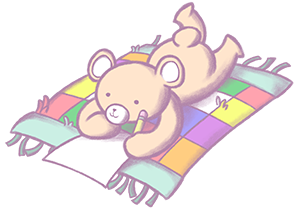By Janis D. Gioia, MAEd.
Books have the ability to calm and comfort children with anxiety, autism spectrum, depression and other mental health challenges and disabilities.
Sometimes clinicians, parents and teachers use bibliotherapy.
Bibliotherapy books help a child through a difficult time (grief, hospitalization, loss of a pet, starting school etc.) or with a specific concern (like dealing with a chronic illness, anxiety, or being bullied.)
With this post, Comforting Anxious Children, introduces a series called Soothing Stories. These are not bibliotherapy stories.
I think Soothing Stories are beautifully written and illustrated books which, when read to a child, offer calm and comfort.
When possible, I will include interviews with the author and illustrator, to really bring the book to life, and to give you and your child a sneak-peek into the author’s and illustrator’s inspirations for the story.
I debated about writing this post. I don’t ever want to seem condescending.
And let’s face it, we all “know” how to read to children.
But there are certain things that we can do that can enhance a reading experience. Make it more than just reading words on a page.
I asked a few friends (elementary school teachers) about my topic for this post. They unanimously agreed that I should proceed.
Here’s one reason why:
My colleagues and I often presented Family Reading Nights to the parents and caregivers of our students. We shared information on a variety of literacy topics.
After surveying parents on subjects of interest to them, we found that they wanted us to share our book reading techniques to encourage positive early literacy experiences with their children.
(Our student’s parents said that when they read books at home with their children, the kids would say, “That’s not how the teachers do it.”)
It’s certainly not rocket science, but you do pick up a few tips in those “Teaching Reading in the Primary Grades” classes required in teacher education programs. 🙂
While reading to comfort a child is not the same as trying to actively promote literacy and early reading, some of those same principles apply.
Just remember, these tips are a meant to enhance your child’s story experience…in a perfect world.
We all know that with kids in general, and those with anxiety, mental health challenges or other disabilities, there are often more chaotic moments than peaceful, tranquil ones.
That’s okay.
I was often reading a book while children in my class, who struggled with emotional or behavioral issues, were anything but calm. My teaching assistants might have been dealing with a child who was agitated and physically or verbally combative.
To distract and calm my other students, I often took them out in the hallway, with a book in hand, reading to them while staff calmed the other child.
It was more like pandemonium than peaceful at times, but I kept reading. Most often the words and the pictures had the effect of settling the other students, who just wanted everything back to normal.
My story reading, at these times, didn’t utilize many of these tips.
We all do our best at any given moment. Do what you can, when you can.
10 Tips for Reading to Comfort an Anxious Child
1. Pick a book with a calming story and illustrations. My Soothing Stories posts will give you some ideas. Books that have nature scenes and beautiful illustrations are good choices.
2. Practice reading the story aloud or silently a few times first. Your familiarity with the text makes for a more fluid reading experience, which is relaxing for the listener.
3. If you are reading to one child, or a small group, gather them around you on a sofa or over-sized chair. Reading in close proximity gives them the comfort of your presence and physical connection, which is calming.
4. If you are reading to a large group, hold the book off to the side so the children can easily see the illustrations. (For a large group, a bigger sized book, available in most libraries, will help.)
 5. Read with expression. Adjust your voice volume, tone, pace and pitch to what is happening in the story.
5. Read with expression. Adjust your voice volume, tone, pace and pitch to what is happening in the story.
If a character whispers, whisper. If a character is tiptoeing through the woods, read quietly. If the character is smiling, convey that with a smile of your own.
If you are comfortable, give each character different voice.
Add a little bit of drama. Not a three-ring circus, but enough to really bring the story to life.
6. Read the title and the name of the author and illustrator.
7. As you read the story, point out the beautiful illustrations, commenting on their soothing colors, textures, or the mood they evoke.
The story and the illustrations calm the child, distracting them from anxiety.
Ask the child how the pictures make them feel.
You may get responses like “cozy”, “peaceful” or “like I am in another place, far from home, but it feels nice.”
Comments like these show that the child is involved in the book in many dimensions, beyond just listening.
Discuss the scenes in the book, or the ways the characters are feeling.
Does it seem like autumn with the smell of damp leaves or the crackle of twigs in a bonfire filling in the air?
Does the main character seem sad, lonely or scared? Maybe brave, fearless and bold?
Has your child experienced these things? Help your child relate to deepen the experience.
Books are sensory-rich…encourage your child to use as many of his senses in your reading as possible.
The more engaged their senses are, the less they focus on anxiety, fear and stress.
8. Read slowly…don’t rush through the book. Re-read pages if your child asks you to…or read the story again.
9. Do not teach phonics or turn this into a reading lesson. That is for another time. This is just is about comforting your anxious child.
10. Place the book in your child’s quiet space or your classroom’s relaxation area so the child can turn to the book when relaxing.

Ideally you are reading in a favorite quiet space, or cozy place, with soft lighting and maybe relaxation music in the background. Maybe a butter-soft blanket wrapped around your child.
Since kids can be anxious anywhere, anytime, having a soothing story with you for places that cause your child anxiety…doctor’s or dentist’s office, holiday gatherings at homes of family or friends, etc., or anyplace that your child might get overwhelmed, is always a good idea.
By following these tips your child will see that getting lost in the magic and beauty of a story can transport them into a peaceful place. Soothing stories can become one of the go-to strategies in your toolbox to help anxious children.
My next post will introduce the first soothing story, Fletcher and the Falling Leaves, a beautiful book about a little fox who has quite a bit of trouble understanding the changing seasons.
Peace,
Jan

By signing up, you’ll also receive your free guide with 20 ways to comfort your child…mind, body and spirit.







 in Ohio
in Ohio
2 Comments
Great tips for grandparents too!
Thanks…yes, for grandparents, aunts, uncles and everyone else in between. 🙂